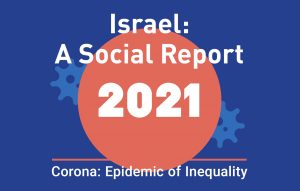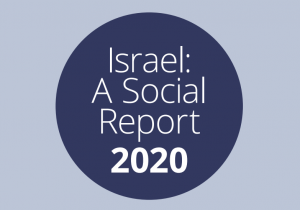This study examines the labor force status of Immigrants from the Former Soviet Union in 2016, 25 years after their immigration to Israel
Since the disintegration of the Soviet Union in 1989, nearly a million men and women have immigrated to Israel.
In general, the educational level of immigrants from the former Soviet Union who came to Israel between 1990 and 1995 was higher than that of the veteran population. Two-thirds had scientific, academic, or technical occupations, including numbers of engineers and physicians equal to or greater than in the host society; their labor force participation was also higher than that of the host country. However, their integration into the Israeli labor force was slow and usually involved prolonged periods of training or unemployment, and a large proportion of them found jobs in occupations in which compensation was lower than in their country of origin.
This study examines the labor force status of these immigrants in 2016, 25 years after their immigration. The data are from the Central Bureau of Statistic’s Household Expenditures Surveys, and they compare two points in time: 2006 and 2016 – the most recent year for which we have complete figures.
We chose to focus on the primary working age, 25-54, and not to include employed persons born in Israel, whose numbers are still small, as they came of age only in 2015. It should be noted that most of the immigrants who were between the ages of 25 and 54 in 1990 had left the labor force by 2016. Thus the target population of the study includes employed persons born between 1960 and 1990, the majority of whom – those born between 1960 and 1979 – studied — and some also worked in the former Soviet Union, while a minority, those born between 1980 and 1990, studied in Israel, either in elementary or high school. In a separate chapter we will examine the situation of immigrants aged 65 and over.
Studies of the integration of immigrants from the former Soviet Union into the Israel labor market usually focus exclusively on the immigrants themselves; however, a survey conducted by the Central Bureau of Statistics in 2010-2011 compared these immigrants with three other immigrant groups: immigrants from Europe and America, immigrants from the Middle East and North Africa, and immigrants from Ethiopia. A major study of integration into the labor market of immigrants from the former Soviet Union was based on this survey.
In contrast, we chose to compare immigrants from the former Soviet Union with the main social groups in Israel and not just with the immigrants among them: first and second generation Israelis whose origins are in Europe or America (Ashkenazim), first and second generation Israelis (for first generation: those who immigrated prior to 1989) whose origins are in Asia or Africa (Mizrahim), Israelis born in Israel to fathers born in Israel (third-generation Israelis), Ethiopian Israelis who immigrated in 1990 or afterwards, and Arab citizens of Israel.
Between 2006 and 2016, the situation of immigrants from the former Soviet Union vis-a-vis Israel’s labor market improved. Their average income grew by 60%, approaching the average wage of Israelis. Concurrently, there was an increase in the proportion of immigrants employed in white collar jobs and a decrease in the proportion employed in blue collar, sales, service and clerical jobs. At the same time, immigrants from the former Soviet Union have yet to attain the upper reaches of the salary scale – fixed as they are around the average wage: they are still employed less in white collar jobs and more in sales, services and clerical positions.
As for immigrants from the former Soviet Union aged 65 and over – their wages are lower, on average, than those of Ashkenazi and Mizrahi first and second-generation Israelis, and their representation in sales, services and clerical work is higher.
The various studies mentioned in this text differ from one another with regard to the ages and years studied. Still, the picture that emerges from them is quite similar: The labor force participation of immigrants from the former Soviet Union is very high, and, at the same time, their income is lower, on average, than that of some of the other origin groups.





